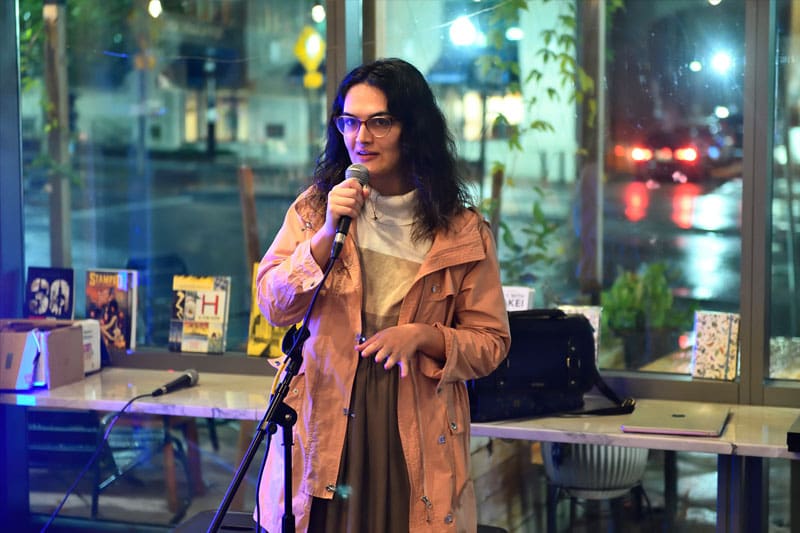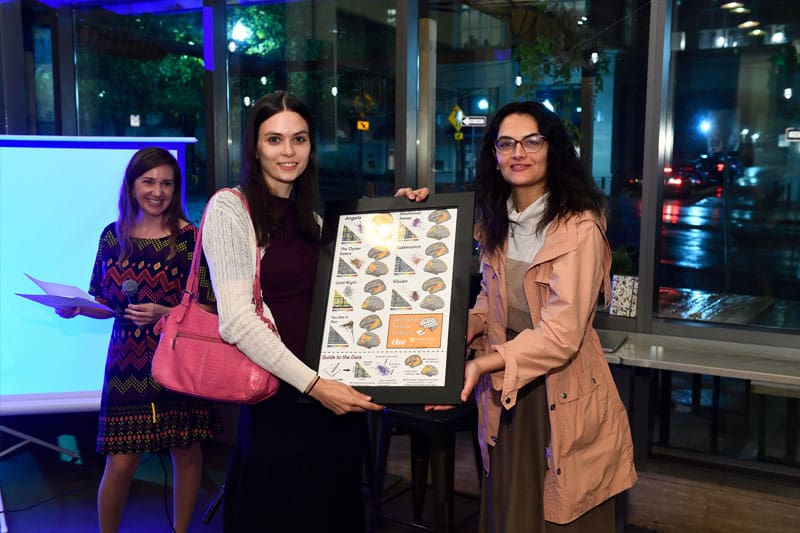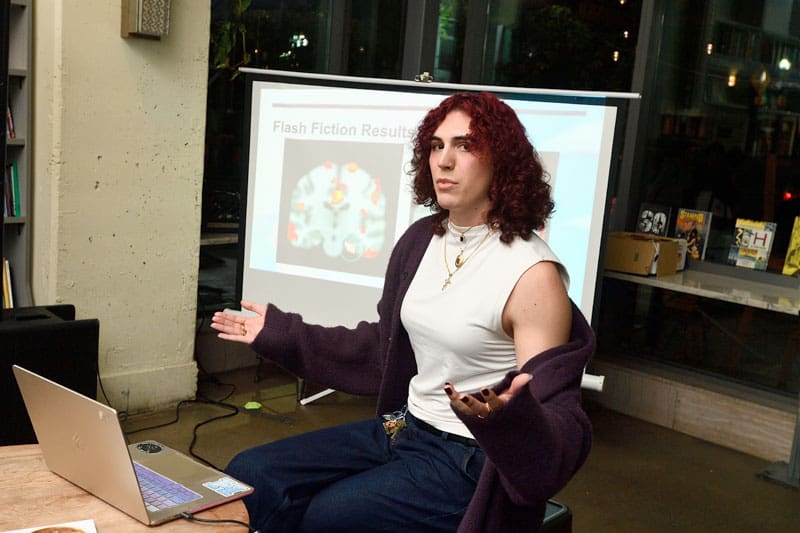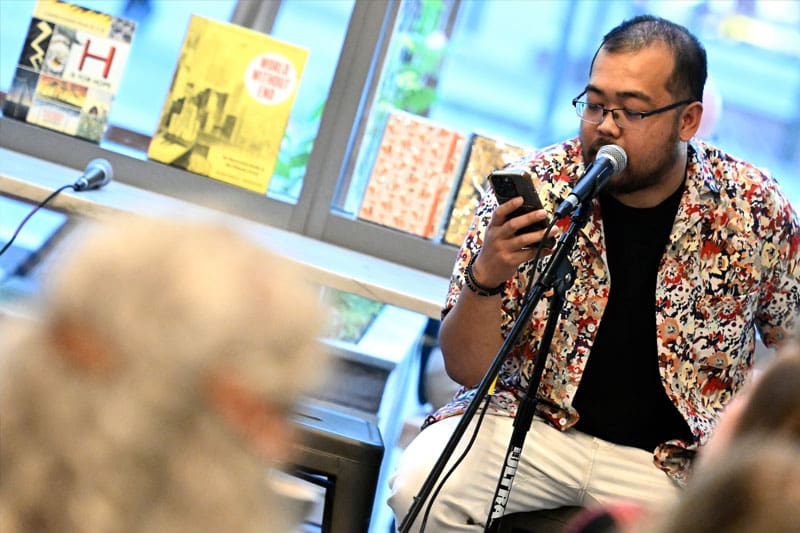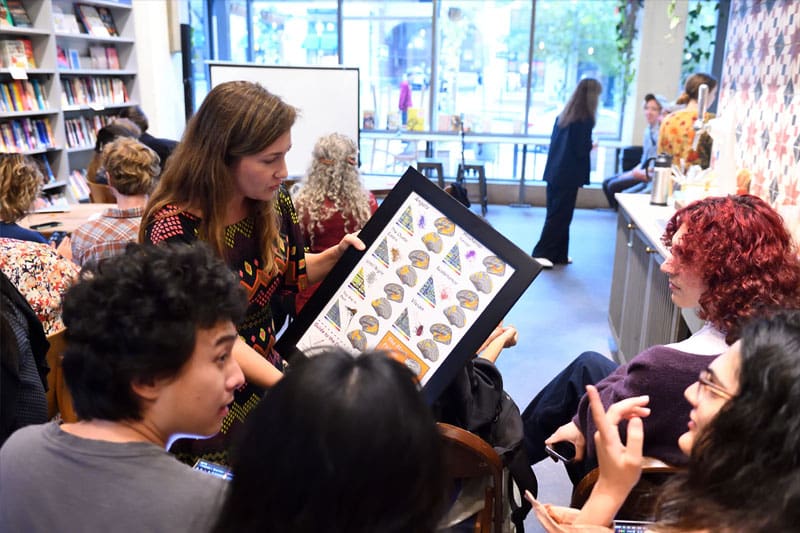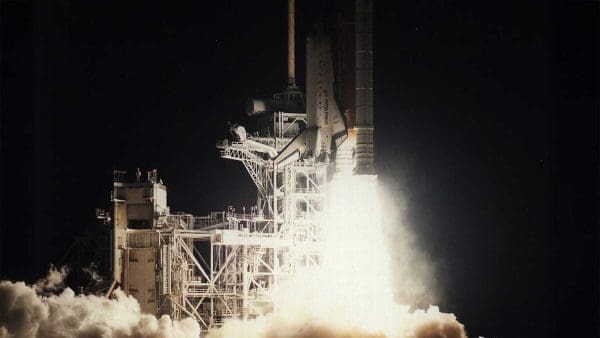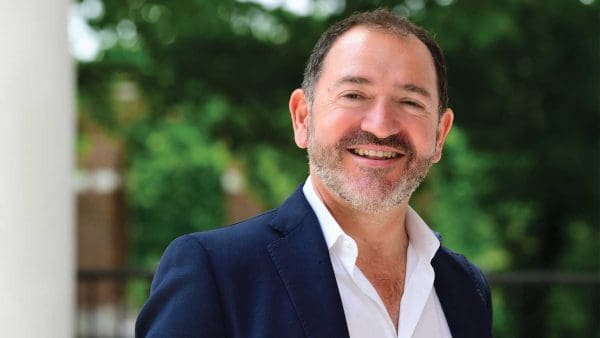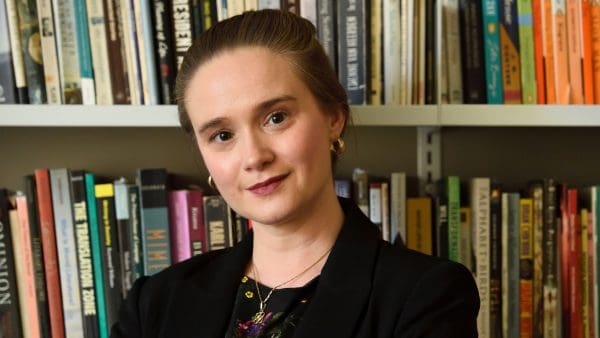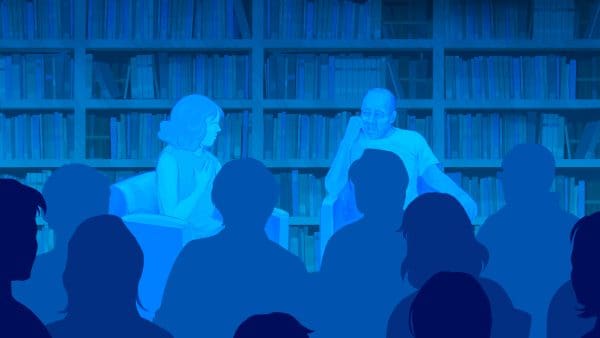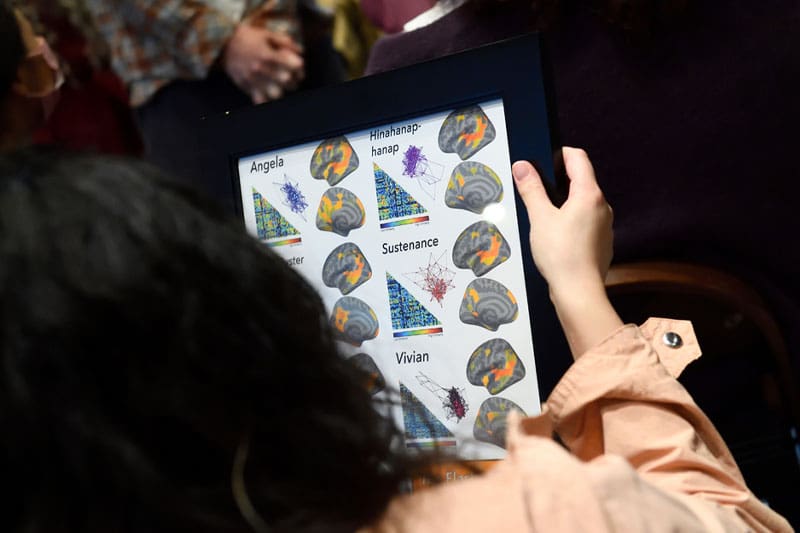
What steps do you take to figure out how the human brain processes memory? You hold a fiction writing contest, record people’s brains while listening to the winners, and crunch your data, of course.
Let’s back up.
Psychologist Janice Chen studies how we construct and retrieve memories of complex real-world scenarios. To mimic these scenarios, she’d been using existing data drawn from brain scans of people listening to stories like J.D. Salinger’s “Pretty Mouth and Green My Eyes,” or watching TV shows like Sherlock on the BBC. Sometimes the undergraduate students working in her lab penned fiction to meet particular criteria she was interested in. But she wanted to put neuroscience research in front of the wider community, maybe sparking interest in those—especially young people—who might otherwise believe it uninteresting or inaccessible. What if, she thought, she could hold some sort of contest?
Poet Dora Malech, chair of The Writing Seminars and editor in chief of The Hopkins Review, is Chen’s neighbor in Baltimore’s Tuxedo Park neighborhood. Their daughters are both in the third grade, and their sons are in the same daycare class. In that way of neighbors, they had a general idea of one another’s work, but believed the specifics too disparate to try to comprehend in depth.
But when Chen mentioned her contest idea to Malech, the pieces suddenly fell into place.
“It was like a miracle, because I realized that she knew how to run a short story contest,” says Chen, assistant professor in the Department of Psychological and Brain Sciences. “She already had all of the architecture to have the stories submitted, and to advertise it, and to actually recruit people with some expertise to read the stories.”
Want to submit a story? The next fMRI contest opens Nov. 15. Submit your piece by January 15, 2025.
Uncharted territory
The pair launched their contest in summer 2024, seeking previously unpublished “flash” (very short) fiction between 500 and 1,500 words from youth and adult writers in Baltimore City. Entries in this “fiction Made to Read & Investigate (fMRI)” competition were evaluated on their literary merits by The Hopkins Review editorial team of Writing Seminars graduate students, with input from students in Chen’s lab. Winners earned unconventional rewards: publication in The Hopkins Review; a $500 prize; participation in a public reading, held in October 2025; and a framed graphic created from the resulting brain data.
It was uncharted territory; no one really knew exactly what to expect. But a year later—stories written, winners named, and data collected—the contest has yielded both new literature and new science, and the team is recruiting for a second round to open Nov. 15.
Words into data
In a lab at the Kennedy Krieger Institute on Johns Hopkins’ East Baltimore campus, psychology doctoral student Samira Tavassoli presses a button. “Three, two, one, go,” she says into a microphone. A participant, strapped into the MRI scanner in the next room, begins to retell from memory the story she just heard—a piece titled “You Are in Pain,” authored by Baltimore writer Lorenzo J. Geronimo and one of two winning entries in the contest’s adult category.
Tavassoli peers at the four monitors before her, where colored patterns shift as the brain performs its acts of recollection and narration. Every 90 seconds, the instruments capture 60 of these images, storing them as data files for Tavassoli to analyze later.
“The story was very interesting,” the participant comments as she finally emerges from the scanner.
Tavassoli is interested in whether the emotional trajectory of a series of events affects how well people remember them. If the emotional flow remains steady, does that help the brain connect events because of their logical sequence? Or is it the opposite: if the emotions constantly shift up and down, does the element of surprise help us remember?
Taking it apart
To answer this question, Tavassoli takes apart some of the winning stories and pastes them back together into three different versions, changing the order but not the content. In one version, the emotions rise and fall sharply and erratically. In another, they rise and fall in gradual peaks and troughs. In the third, they start high and consistently arc toward the negative.
Tavassoli then tests different participants’ recall of the various story versions by studying the details they describe and how well they remember the order of events. She also studies the activation of brain regions like the hippocampus to see if there’s a difference in how they encode the information based on the emotional flow.
With their resemblance to everyday events, stories can help to unearth findings that might not emerge through more typical memory research stimuli, like lists of random words. The complexities of the fMRI contest stories also produced some unexpected suggestions for future research directions. “The stories themselves, all by chance, happen to have really interesting properties that we didn’t really consider before,” she says.
As it turns out, recall is better when emotions flow erratically.
Unlimited research
Most experiments begin with a hypothesis that drives a design carefully constructed to test it. This experiment was not like that. Instead, the intention was to create a new dataset—available soon for any scientist to use—that would invite new hypotheses and explorations. “I knew that if we collected this data, we would come up with questions along the way,” Chen says.
Sure enough, other students in her lab took up other angles. Doctoral student Evelyn Allen is interested in people’s perception of time, and used the data to confirm an earlier observation of Chen’s lab that people vastly underestimate how long they spend retelling a story. Now, she’s following up by trying to understand what’s happening in the brain that might predict the degree of underestimation. Are the parts of the brain responsible for remembering events related to those that track the passage of time? Does it have to do with how engaged you are in an activity?
How we perceive the world
And Veronica Jung, a junior double-majoring in English and neuroscience, wants to understand how people define boundaries between events, so she’s plumbing the data to see what story-related factors influence that process. In some stories, events are highly related to one another with little extraneous information; in others, the plot spins off into tangents. By studying how much different subjects agree on where to draw the lines between separate events, she’s testing the influence of factors like emotional arousal.
“This project was really interesting for me because it’s not only about literature and brain sciences, but it’s also about how people perceive the world, which is a much more psychological perspective,” Jung says.
For Malech and her Hopkins Review team, the scientific requirements here demanded a different structure than a typical literary contest, but not in the way they’d first imagined. While you might think that nice, neat narratives would best suit a scientific purpose, they quickly learned from their counterparts in the lab that the opposite was true.
“I would make the assumption that the more experimental it is, the less it’s going to work, but the science is actually pushing us toward more experimentation on the literary end, which is super cool,” Malech says.
fMRI 2.0
fMRI’s next iteration will be slightly more narrowly focused but, if anything, even more experimental. The original duo joined forces with computer scientists and an education researcher to embark on a new study that investigates how the brain handles the concept of cause and effect.
To observe the brain while it makes connections between events, researchers may ask participants to map out all the connections they can find in a story, and then compare responses across participants. The more connections people see, the better they remember the story.
But most mainstream stories and movies—even when writers are given free rein to innovate—contain very clear and logical causal chains, and the researchers want to see what happens when participants confront muddier situations. In an effort to divorce causation from narrative coherence, this year’s contest will specifically seek non-traditional, non-linear narratives. The pieces’ heightened complexity will introduce more variability while collecting brain data, and will be used to examine how cause and effect in stories may shape people’s memories.
Continuing the work
The expanded team, which includes Tom Lippincott, director of the Center for Digital Humanities and associate research professor in the Whiting School’s Department of Computer Science; Hale Sirin, assistant research professor in the Center for Digital Humanities; and Daniel Princiotta ’05 MA, assistant research scientist at the School of Education’s Center for Social Organization of Schools and the Everyone Graduates Center, won a 2025 Johns Hopkins Discovery Award to support their efforts.
To help authors tackle the new contest parameters, graduate students will design and host workshops to be held at libraries and in schools. The sessions, the researchers say, will offer techniques to help make the concept of writing experimental fiction a little less abstract, and will reach even more deeply into the community than the first time around.
Weaving it all together
On a rainy fall evening, it’s standing-room only at Bird in Hand bookstore just outside the Homewood campus. Once again, no one knows quite what to expect. It’s at once a literary reading by the contest winners, and a scientific presentation of some of the study’s early findings.
After all seven winners and runners-up finish reading their work and the applause dies down, Tavassoli, Allen, and Jung share slides that illustrate their data and discoveries so far. As they describe how aspects of each story were used to explore, for example, the lasting impact of narrative pacing on the brain and how the brain makes sense of time, the writers’ faces begin to light up with new understanding.
“I assumed there was this kind of research going on but I’d never participated or anything, so until tonight I really didn’t particularly understand the process. It was great to get an explanation,” says Baltimore writer Joseph Young, whose story “Vivian” was a runner-up in the contest’s adult category.
The tangible proof
Tavassoli then calls each writer up front and presents them with a framed poster she created containing images of brain data for each story along with a brief description of the research. Quiet settles over the crowd as the authors take in the pictures and words.
It’s not often that writers get tangible proof of their work’s impact on a reader, so seeing the fMRI data for themselves is welcome, if unorthodox, feedback, Malech says. “This is the most literal, technical sense of saying, yes, these people read it, they absorbed it, and here’s what’s happening in their brain. Which you wouldn’t even think possible,” she says.
“I just had this sense that people who create these stories would also find it gratifying for there to be not just scientific return on their investment,” Chen adds, “but the idea of seeing the brain activity as people are listening to your story, I thought, was a very special kind of outcome.”
Safe to say none of the authors’ friends will have the same poster on their walls.
For information about or to enter the 2025 fMRI contest, visit hopkinsreview.com.

